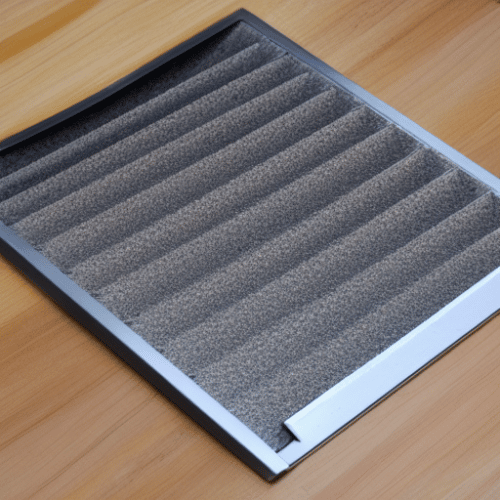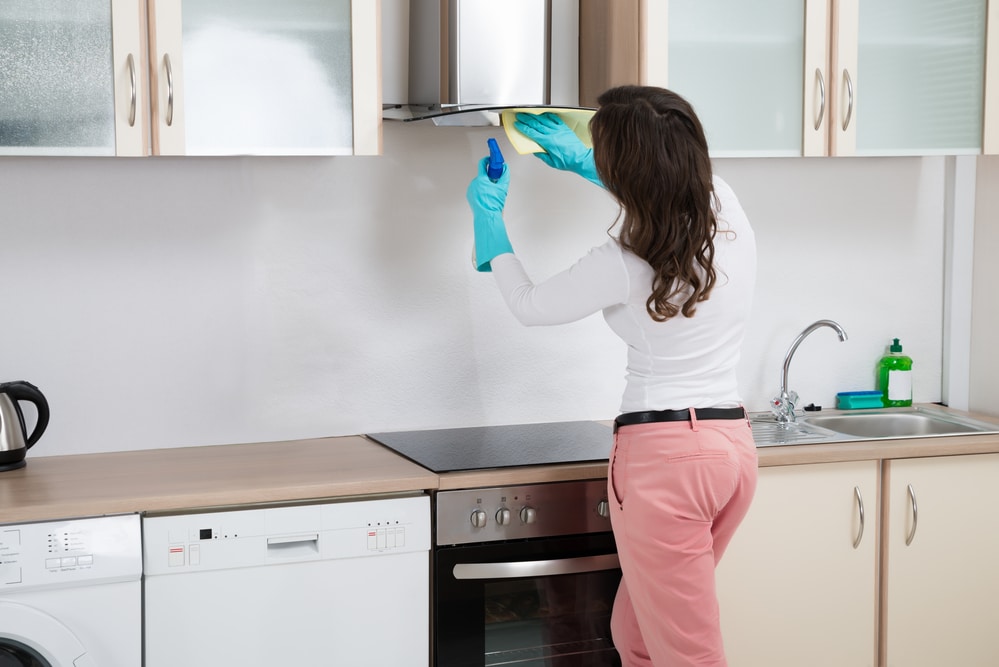Last Updated on
Many modern kitchens have cooker hoods to help circulate smoke and hot air out of your kitchen for a healthier cooking environment. Many people are unaware that these cooker hoods have a filter that cleans the air before recirculating it. They remove toxins, smoke particles and even trap grease. This makes for a cooler environment and cleaner air for you and your family.
If you know that there is a filter in your cooker hood, did you know that it needs routine maintenance to improve its longevity and ensure it remains effective? Cleaning the filter can be done with things you have in your kitchen, and don’t fret. We have created this guide to help you along the way.
Here’s how to clean a cooker hood filter for your benefit, as well as your kitchens!
What Is a Cooker Hood?
A cooker hood can go by many names, such as a range hood, extractor hoods, extractor fan, extraction vents, oven hoods, and more. However, no matter what you call it, if you plan to use your stove’s burners to make tasty food, you need to use your extractor hood.
In order to circulate the air from your cooking, they are placed immediately over your burner. The cooker hood must be installed for it to work properly. The fans draw the hot air and the smoke particles through the system to stop them from circulating your kitchen.
Each cooker hood will have a filter that prevents particles from circulating through the air when you are cooking. These filters are vital in using a cooker hood. Therefore, they need to be maintained correctly.
How to Clean Range Hood Filters
In order to have a safe environment when cooking in your kitchen, your oven hood filter needs to be of the best quality. Since you cook in your kitchen often, your filter will become dirty after a while.
To ensure that you have air free of grease and smoke in your kitchen, you need to deep clean a greasy filter. Also, aside from the filter, remember that the cooker hood itself also needs to be maintained and cleaned so it remains effective for a very long time.
Here is a guide on a simple cleaning solution for dirty filters. It is now time to put in some elbow grease!
Step 1: Separate the Extractor Filters From the Extractor Hood
The first step to cleaning cooker hoods is to separate the filters from the range hood. Most filters should slide out of an extractor hood without trouble, but some may require you to loosen a screw or something similar.
Step 2: Create a Place for Deep Cleaning
After hood filters are separated from the range hood, you can treat filters with deep cleaning. To clean all the oil and grease deposits off of filters, you need a place to clean them. You can clean your filter in a large pan, bucket, or even your kitchen sink. Wherever you choose to clean your filter, make sure that you can fit the whole filter in there to submerge it in water completely; you don’t want to make a mess, making the whole process a lot easier.
Step 3: Create a Solution to Clean Your Filters
After you have found a place to wash your filters, you need to create the solution. There are many things that you have lying around your house that you can use to clean your filters, such as dish soap or bicarbonate of soda. You can mix these items with hot water or apply them directly to your filter.
Step 4: Submerge Your Filters
Whether you have mixed bicarbonate of soda, washed up liquid with hot water, or have decided to put them onto the filter, you now need to submerge your filter completely in hot water. Make sure it is covered for the best results. You may see the bicarbonate of soda bubbling during this time.
Step 5: Let Your Filters Soak
Let your dirty filter rest in hot water with soap and bicarbonate of soda for at least 10 minutes. This is to ensure that all the grease that the extractor fan filter has build up gets removed.
Step 6: Scrub the Filter
With a soft-bristled brush, scrub the filter in a circular motion to remove the oil and grease deposits. Oil won’t come off with just water alone, which is the dish soap or bicarbonate of soda is crucial. If there are particularly stubborn stains, add a little more dish soap to the area and try again.
Step 7: Remove and Dry Your Filters

Take your now clean extractor fan filter out of the sink, large bucket, or large pan. You should see that the water now has a thick layer of grease on top of it. Since your extractor fan filter is wet, you need to let it completely dry. You can do this by allowing your extractor fan filter to dry on its own, or you can speed up the process by using paper towels.
Never apply heat to your filters to help them dry faster, as this can damage the integrity of the filters and impede their effectiveness.
Step 8: Put Your Filter Back into Your Range Hood
Once your stainless steel filter is dry, you can put your stainless steel filter back into your range hood.
How Often Should You Clean Your Cooker Hood Filter?
Most manufacturers recommend cleaning your cooker hood filter every 2-3 months; however, this depends on how often you use your stovetop. If you frequently cook greasy foods, you may need to clean them as frequently as every month. Alternatively, if you don’t use it often, you can get away with cleaning it less often.
It is recommended that you clean your hood filter after a big event like Christmas dinner or if you’re hosting a large group.
The best thing to do is to check it regularly and if grease and grime are building up, give it a quick wash before replacing it again.
Types of Extractor Hood Filters
Your range hood filter also can go by many names. Such names include hood filters, range hood filters, grease filters, extractor hood filters, metal filters, carbon filters, baffle filters, charcoal filters, mesh filters, paper filters, oven hood filters, and more. There are different types of range hood filters.
Range Hood Mesh Filters
Range hood mesh filters are one type of grease filter. Mesh filters consist of fine mesh grates that are made of metal. This metal comes in long strands that are woven into each other like a net.
Metal Filter
Metal filters are the second type of grease filter. Metal filters could be made of stainless steel or aluminium. A metal filter has long, thin panels of metal that are lined up beside each other.
Baffle Filters
Baffle filters are the third type of filter. Baffle filters are made of stainless steel. Baffle filters consist of a variety of more than one metal loop where grease seeps into and away from a stove’s burners.
Carbon Filter
This type of filter has a layer of activated carbon inside of it. This activated carbon sucks in greasy air and trapped the grease filters out of the clean air. Sometimes, instead of activated carbon, activated charcoal is used instead. In this case, charcoal filters are the same thing.
If Filter Is Still Not Working
If you find that your range filter is still not working properly, you should consider getting a replacement filter. You can find a replacement filter in many different stores. Most filter and hood manufacturers should tell you how often the filters need to be replaced when purchasing.
However, if you notice that smoke is staying in the air when you cook, then it’s probably time to replace it.
Time to Whip up Something Tasty
You should now have a clean range filter. Although there are many different types of filters you can have for your oven, all of them can be cleaned in the method outlined above. Home-cooked food is one of the best things in the world. However, you need to know how to ensure that your kitchen is a safe and healthy environment.
A filter can get rid of all of your grease and smoke from the air in your kitchen and reduce the chances of you setting your fire alarm off the next time you are cooking something! Therefore, you must have a clean filter all the time!



